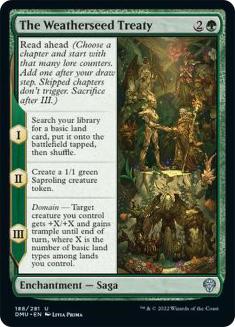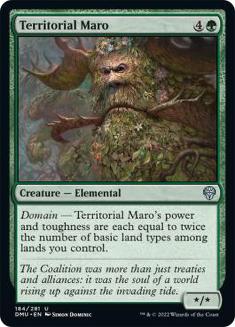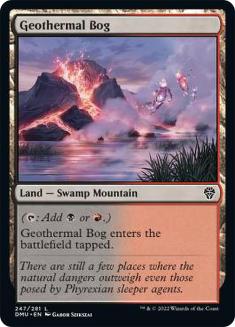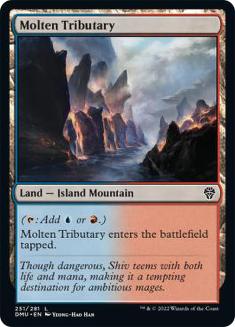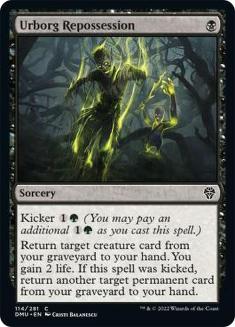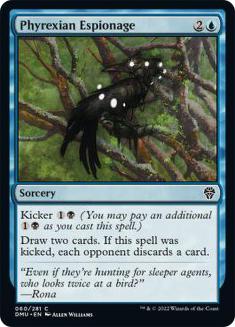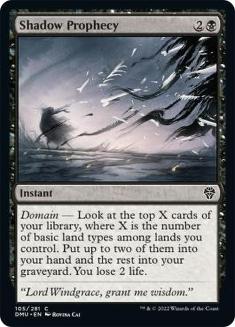I’ve got about 40 Dominaria United drafts under my belt between Best-of-One and Best-of-Three, and I can state with confidence that Dominaria United is a very deep draft format. It feels like one of the most interesting formats in recent years for the draft portion. The complexity expands even further with the amount of dual lands opened at the table with any given pack. There is so much educated guesswork and hedging that it’s impossible to break down as a science.
One thing is certain: it is a synergistic set that heavily rewards you for being the right colors for your seat at the table. I’ll explain the theory of what I believe to be the best approach, as well as break down how to draft, and build it!
Domain, in the Right Colors
Dominaria United draft rewards you for being in the colors for your seat, also known as “drafting the hard way.” This means paying attention to the signals you are receiving and sending, and getting into the colors most open.
The domain deck is extremely versatile, and often consists of only two to three colors with some splashes. Another significant upside is that you can support any bombs you find in the second or third pack. The true beauty of this approach is that it offers the most flexibility, and you will always end up with a decent deck, even if domain isn’t open!
There is still a misconception that you must have a lot of domain payoffs for the deck to function, but you can be a three- to five-color deck and just play all the best cards you drafted! We have a plethora of win conditions available that have nothing to do with domain. Further, Dominaria United as a set is on the slower side, and this is where the deck tends to thrive.
The General Approach
I am of the opinion that Dominaria United has more upside for drafting dual lands early than any other Magic set ever printed. The idea behind this approach is to take dual lands above most everything besides bombs, top-tier commons/uncommons, or an early gameplan that is taking shape. By taking most of the lands you see, you can also observe the cards going past you to gain some knowledge about what’s likely to be open.
If there were very few lands in Pack 1, I would advise taking flexible cards that are good in every deck, as opposed to narrow cards like Ghitu Amplifier or Captain’s Call. By mid-Pack 2, you should know which direction you’re headed, and start taking the pieces you need to build the deck. During Pack 3, while everyone is scrounging for lands they desperately need, you will be able to swoop all the great cards they couldn’t support. The end goal is to be domain, but with this approach, you will have the flexibility to be whatever deck you want to be when you grow up.
Pack 1: Land or Spell?
Let’s talk about some decisions you will come across during the draft. There are definite reasons to try for a two-color pair from Pack 1, Pick 1, and I believe that is always worth pursuing. But there is a line to make for yourself with regard to when you take a solid card or a land.
The line of how strong an individual card is in Pack 1 versus a dual land is completely contextual, but as an exercise, try taking almost every land you see in Pack 1 for a couple of drafts, and you will start finding said line easier to recognize. The flexibility the dual lands provide allows you to glide through your drafts like a dolphin made entirely of butter – and we all want that, don’t we?
As mentioned above, what if you see very few dual lands Pack 1? I still think that you should stay open and take cards that will work well in both domain decks and two color decks. This does not indicate someone to your right took all the lands. For better or worse, the amount of lands per pack is random. Sometimes they just don’t get opened!
Pack 2: Lane Lockdown
This is normally the pack where you decide where your loyalties lie. If you found your lane in a two-color deck, speculate on how you can use your previous lands for kicker cards or flexible cards if you can find some matching lands. If you’ve hacked into the domain frame, here is where you will be looking for the most power, as well as additional lands to support existing picks or fixing up the manabase.
Pack 3: Fill the Holes
At this point, you should have a very good idea of what your deck is looking for: perhaps a white dual land, early interaction, card advantage, three-drops, or finishers. You don’t need to know every card in the set, but have an idea of your deck’s strengths and weaknesses, and identify what colors you’re committed to. The hope is that you have already established a solid manabase, granting you the freedom to patch up any holes in your deck and absorb any powerful cards that your neighbors can’t support.
Build
I’m a big advocate of running eighteen lands in these decks. I’ve heard people equate Floriforous Vinewall or The Weatherseed Treaty to a land, but I disagree. These decks are very mana-intensive, and the main way you can lose is missing land drops or a key color. At minimum, you want to have two card advantage spells such as Urborg Repossession, Phyrexian Espionage, Shadow Prophecy, or Jodah’s Codex.
In a perfect world, some early removal is nice, but early creatures that can block and trade with opponents’ attackers will do as well. Lastly, you will need some ways to reliably end the game, of which there are too many options to list.
Below are some examples of successful domain decks I have had, all with different subthemes, but still under the domain umbrella.
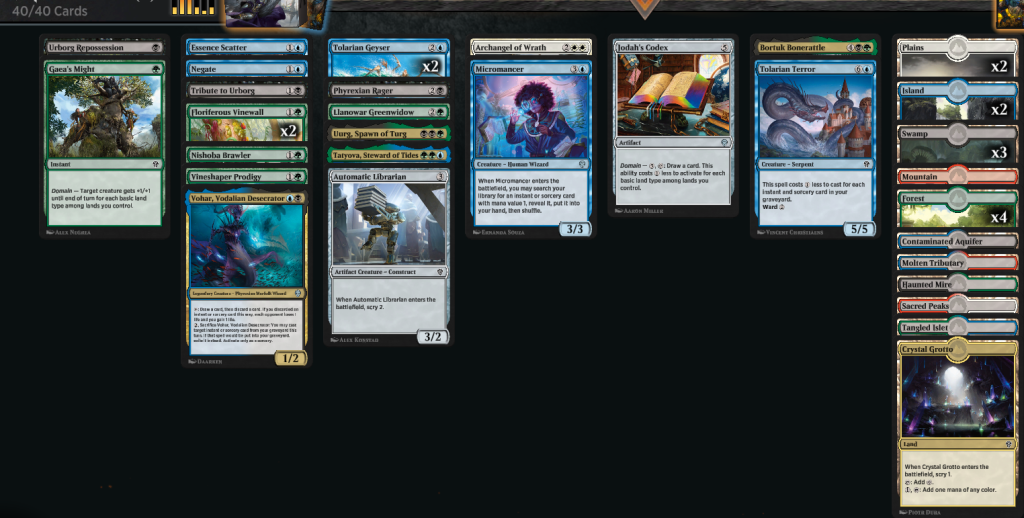
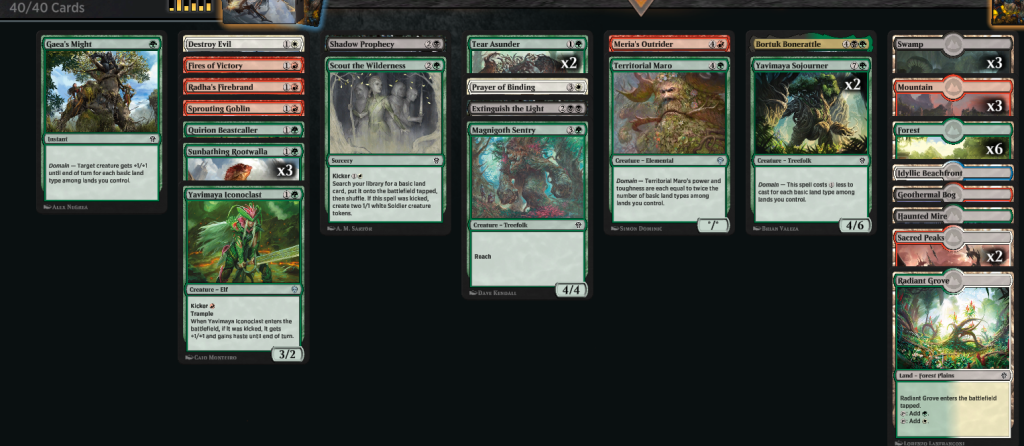
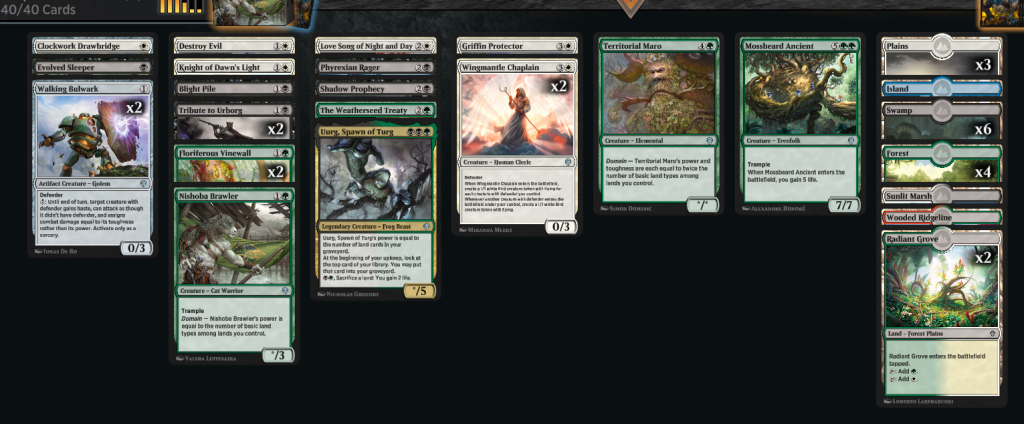
As you can see from the examples, there are lots of ways to win the game with this approach, lots of ways to stifle early threats, and lots of ways to gain card advantage. All for the low, low price of investing in your future!
I have some examples of how the approach has pivoted into aggressive decks, but that’s a story for another day. Give it a shot, tell me what you think about the approach, and don’t tell anyone! See you in the arena!


